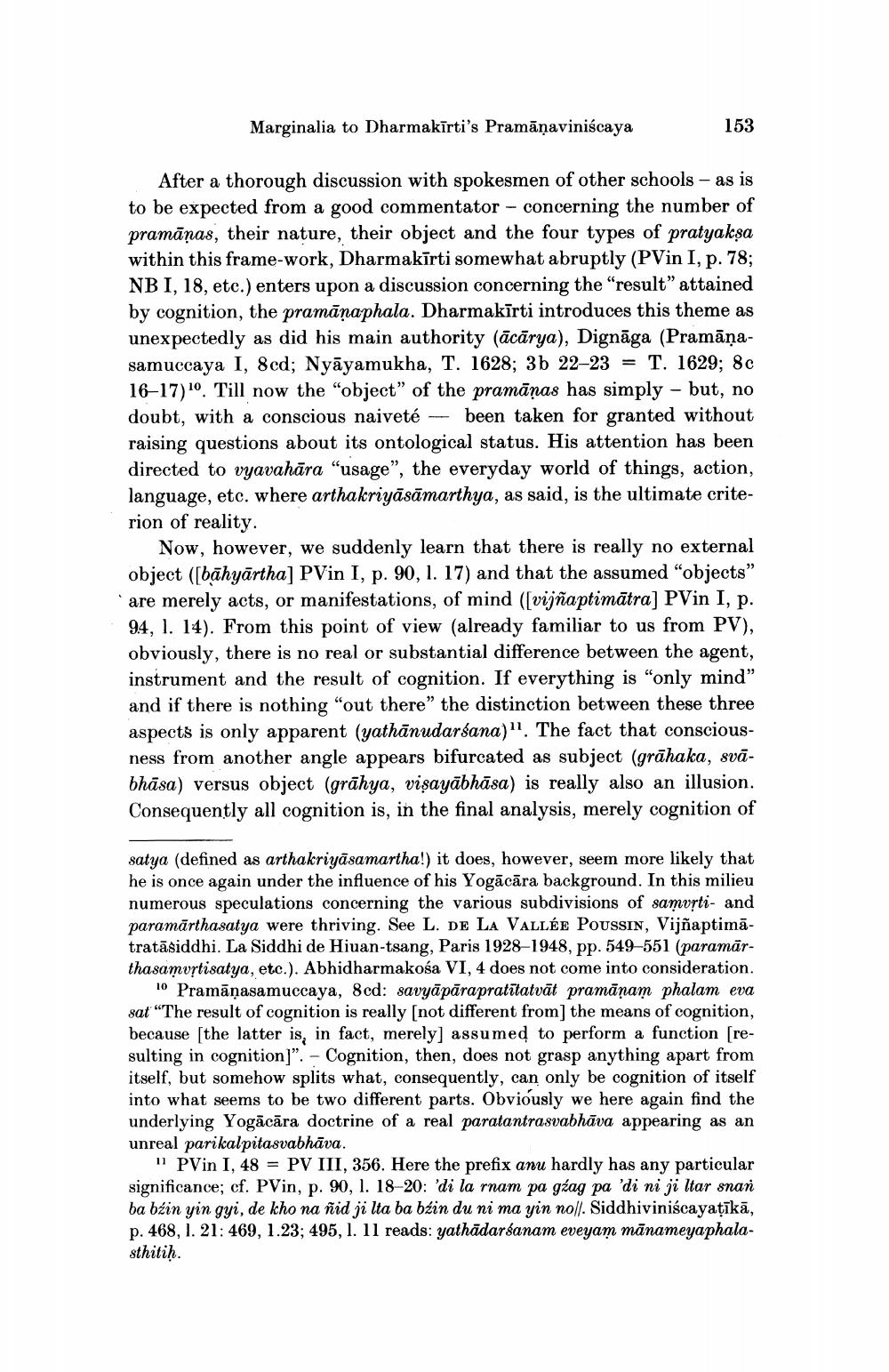Book Title: Marginalia To Dharmakirtis Pramanaviniscaya I II Author(s): Christian Lindtner Publisher: Christian Lindtner View full book textPage 5
________________ Marginalia to Dharmakīrti's Pramāņaviniscaya 153 After a thorough discussion with spokesmen of other schools - as is to be expected from a good commentator - concerning the number of pramānas, their nature, their object and the four types of pratyaksa within this frame-work, Dharmakīrti somewhat abruptly (PVin I, p. 78; NB I, 18, etc.) enters upon a discussion concerning the “result" attained by cognition, the pramānaphala. Dharmakīrti introduces this theme as unexpectedly as did his main authority (ācārya), Dignāga (Pramāņasamuccaya I, 8cd; Nyāyamukha, T. 1628; 3b 22–23 = T. 1629; 8c 16-17)*0. Till now the "object" of the pramāṇas has simply - but, no doubt, with a conscious naiveté - been taken for granted without raising questions about its ontological status. His attention has been directed to vyavahāra "usage", the everyday world of things, action, language, etc. where arthakriyāsāmarthya, as said, is the ultimate criterion of reality. Now, however, we suddenly learn that there is really no external object ([bāhyārtha] PVin I, p. 90, 1. 17) and that the assumed "objects” are merely acts, or manifestations, of mind ([vijñaptimātra) PVin I, p. 9.4, 1. 14). From this point of view (already familiar to us from PV), obviously, there is no real or substantial difference between the agent, instrument and the result of cognition. If everything is "only mind" and if there is nothing "out there the distinction between these three aspects is only apparent (yathānudarsana)". The fact that consciousness from another angle appears bifurcated as subject (grāhaka, svābhāsa) versus object (grāhya, visayābhāsa) is really also an illusion. Consequently all cognition is, in the final analysis, merely cognition of satya (defined as arthakriyāsamartha!) it does, however, seem more likely that he is once again under the influence of his Yogācāra background. In this milieu numerous speculations concerning the various subdivisions of samurti- and paramārthasatya were thriving. See L. DE LA VALLÉE POUSSIN, Vijñaptimātratāsiddhi. La Siddhi de Hiuan-tsang, Paris 1928-1948, pp. 549-551 (paramārthasamortisatya, etc.). Abhidharmakośa VI, 4 does not come into consideration. 10 Pramāṇasamuccaya, 8cd: savyāpārapratītatvāt pramānam phalam eva sat “The result of cognition is really (not different from] the means of cognition, because [the latter is, in fact, merely] assumed to perform a function (resulting in cognition)". - Cognition, then, does not grasp anything apart from itself, but somehow splits what, consequently, can only be cognition of itself into what seems to be two different parts. Obviously we here again find the underlying Yogācāra doctrine of a real paratantrasvabhāva appearing as an unreal pari kalpitasvabhāva. "PVin I, 48 = PV III, 356. Here the prefix anu hardly has any particular significance; cf. PVin, p. 90, 1. 18-20: 'di la rnam pa gzag pa 'di ni ji Itar snan ba bzin yin gyi, de kho na ñid ji lta ba bzin du ni ma yin noll. Siddhiviniscayatīkā, p. 468, 1. 21: 469, 1.23; 495, 1. 11 reads: yathādarśanam eveyam mānameyaphalasthitih.Page Navigation
1 ... 3 4 5 6 7 8 9 10 11 12 13 14 15 16 17 18 19 20 21 22 23 24 25 26 27
